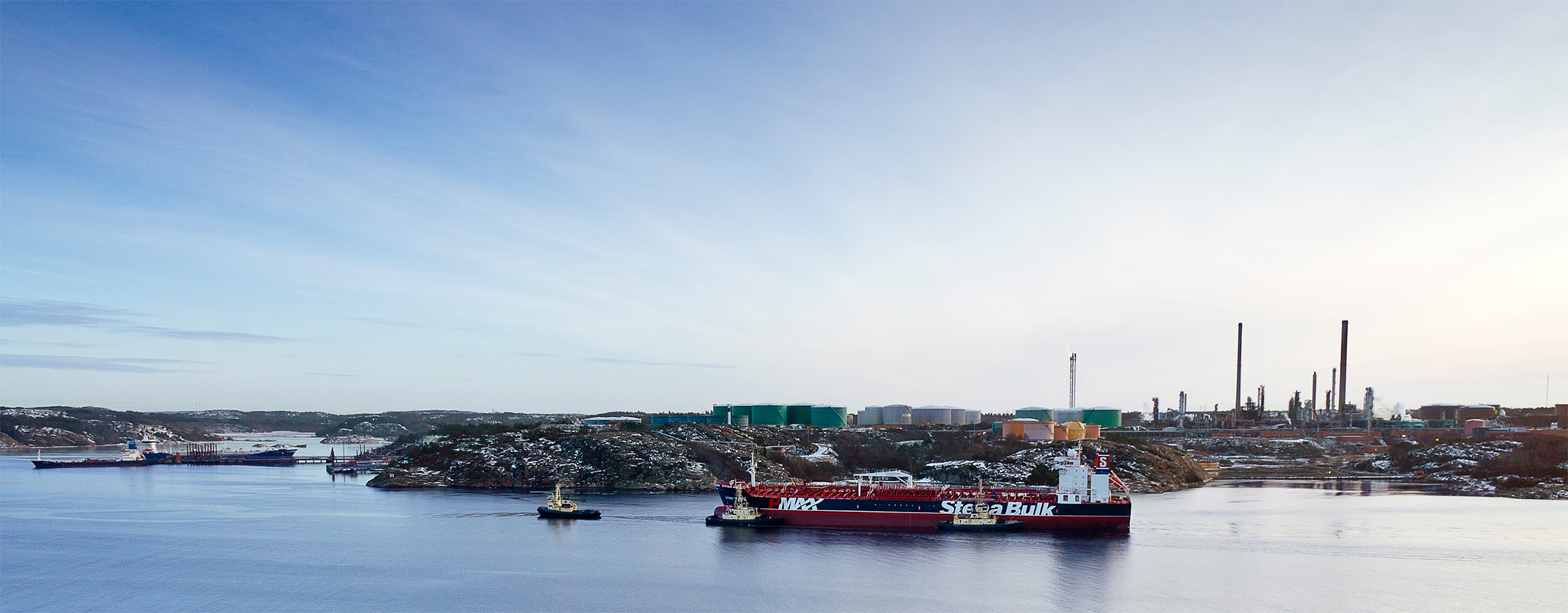Strong tanker market due to sanctions and high demand for oil
The product tanker market has strengthened significantly during April and May, with market rates at much higher levels than for both Q1 2022 and the full year 2021. At the end of May, average spot market earnings for an MR vessel (clean) was about $36,000 per day*. The time charter market has also strengthened and a three-year contract for an MR tanker is currently $15,000-18,000 per day, depending to some extent on the vessel’s design. For a suezmax vessel, average spot earnings are about $22,000 per day**. Volatility in the segment has been high during April and May, with occasional peaks at levels above $60,000 per day.
The VLCC segment is still at historically very low levels, which also imposes an indirect “cap” on suezmax vessels as charterers will combine two cargoes onto one larger vessel if suezmax segment rates become too high.
New trade patterns bring increased transport needs
The stronger product tanker segment is not only due to continuing high demand for oil but also changing trade patterns as Russian oil products are phased out in certain markets. This applies particularly to European diesel imports, which are now increasingly coming from the Middle East, Asia and North America. Overall, the phasing out of Russian oil has resulted in longer transport distances and increased transport efficiency.
The drivers also include structural changes in global refining capacity, where the impact of refinery closures in North America, Europe and elsewhere is now beginning to be felt in earnest. The fact that overall refining capacity has decreased west of Suez but has increased in Asia and the Middle East means longer transport distances, which is affecting the entire tanker market.
High oil prices affect earnings
It should be noted that average earnings are just an average. For both the MR and suezmax segments, earnings vary greatly depending on the type of vessel and geographical trading. By way of example, freight rates in the Atlantic have generally been higher than in Asia. Similarly, clean products have paid better than dirty ones. The difference in earnings is also due to a continuing high oil price. Since early March 2022, the price of Brent oil has been at levels above $100/barrel - and is currently at about $120/barrel. Large differences in bunker consumption between vessels of different age and design have in turn contributed to significant variations in earnings between “standard” vessels, modern ECO-design vessels and/or vessels equipped with "scrubbers***".
Longer distances
Geopolitical instability is also very likely to continue affecting oil and tanker markets going forward. Since the invasion of Ukraine, both the oil and tanker markets have been gradually trying to adapt to the new situation and we have yet to see the end result of this as sanctions continue to be imposed and trade routes are changing. However, increased European imports from more distant producers are likely to continue.
Meanwhile, according to the IEA (International Energy Agency), global oil demand is expected to grow by 3.6 million barrels per day from April to August 2022. The main contributory factors are eased restrictions in China, the US driving season and a continued recovery in aviation fuel demand.
All in all, this promotes a continued “cautiously optimistic” view of product tanker market development for the remainder of Q2 and the rest of 2022.
For our part, as previously announced, our vessels are employed on a five-year charter to Stena Bulk. The base rate is $15,500 per day. There is also the possibility of profit-sharing for freight exceeding the base rate, calculated on the basis of average earnings per vessel per half-year. Stena Bulk employs the vessels on a mix of short and medium-term contracts in both Asia and the Atlantic.
Gothenburg, June 2022,
Erik Lewenhaupt, CEO
* Clarksons Average MR Clean Products Long Run Historical Earnings
** Clarksons Average Suezmax Long Run Historical Earnings
***On-board exhaust gas cleaning, enabling the vessel to use a cheaper type of bunker/fuel.

